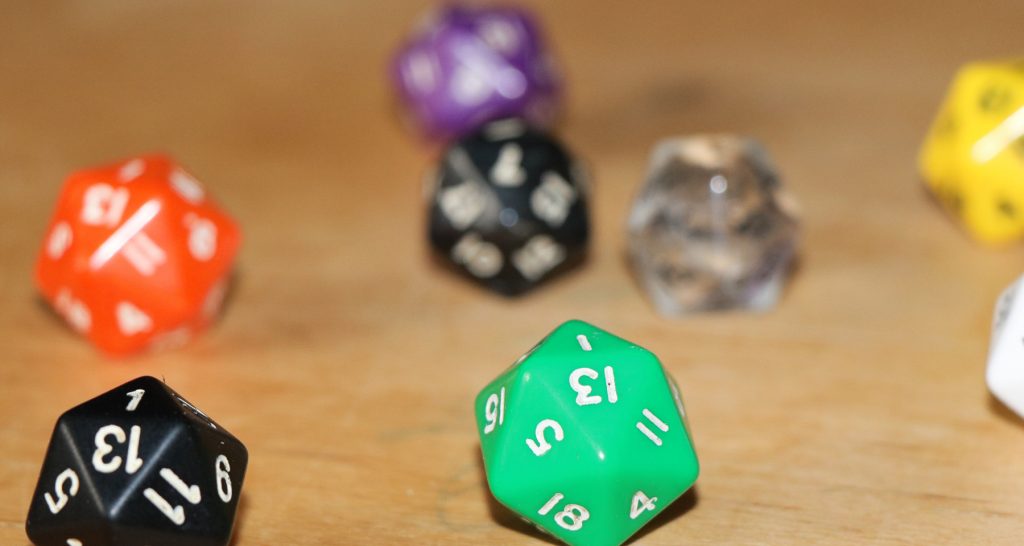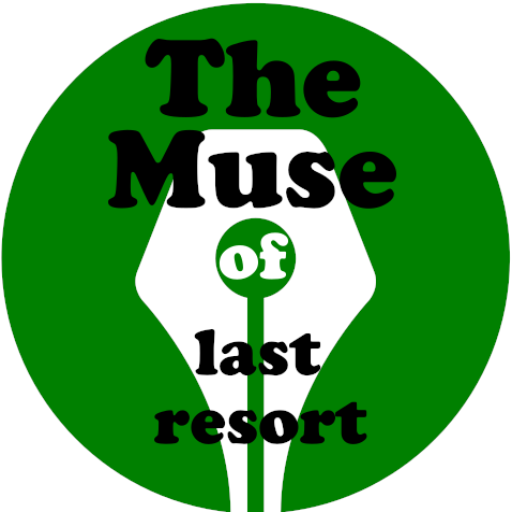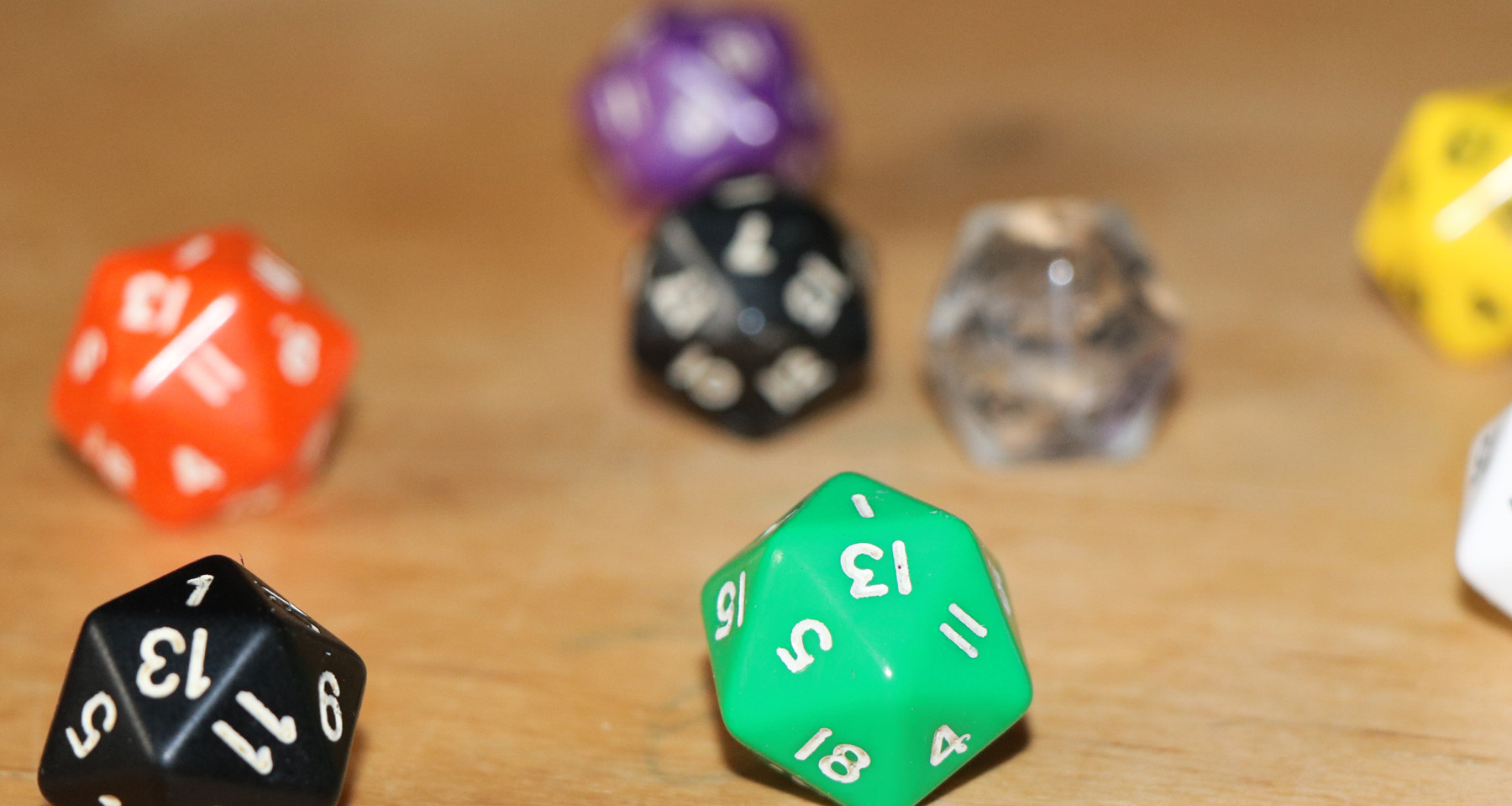With dice and a bit of imagination, you can generate unlimited plots. This is a fun game you can play to challenge yourself and your writing. Not even you know what will happen next.
I recommend a twenty-sided die as this gives an even chance for a lot of possible outcomes.

The dice in this picture are ones tabletop gamers call d20s (because they have twenty sides). They are fairly cheap and available from all decent games shops and many online retailers.
How to play
First, you need a die (or a few dice) and a couple of tables. The first table is for characters and the second is for plot twists. You can also add tables for locations and other elements.
Roll a die to find out who the antagonist (hero) is and a second time to find out who the antagonist is (villain). You may wish to flip a coin or use some other method to select the gender of each.
Then move on to working out and writing down the conflict between the two. What that is will depend largely on what sort of character each one is.
Example character selector
| D20 | Character |
| 1 | Someone from a small-town farming community |
| 2 | An inventor |
| 3 | Businessperson |
| 4 | Police officer |
| 5 | A soldier on leave |
| 6 | A commercial fisherman |
| 7 | An artist about to open their first exhibition |
| 8 | A charismatic preacher |
| 9 | Schoolteacher |
| 10 | Someone on the run |
| 11 | Identical twins |
| 12 | A private detective |
| 13 | Someone who was adopted and is searching for their birth parents |
| 14 | A ghost hunter |
| 15 | Confidence trickster |
| 16 | UFO enthusiast |
| 17 | A hitchhiker |
| 18 | Wedding photographer |
| 19 | A retired stage magician |
| 20 | Newspaper reporter |
Now you have two characters (antagonist and protagonist). Assuming binary genders you have 1,600 possible starting configurations. If you want to include gender non-binary, transgender, etc. that number spikes up exponentially.
Example setting table
The settings table lets you pick a starting location for your story but also allows you to pick a new location when and if you see fit to move the action somewhere else.
| D20 | Setting |
| 1 | An art gallery |
| 2 | Hotel in a remote location – are the characters are unable to leave? |
| 3 | Caravan park |
| 4 | A flower shop |
| 5 | A business conference in the city |
| 6 | The local theatre |
| 7 | The highstreet |
| 8 | A space station |
| 9 | An antique store – roll on the character table for the owner |
| 10 | A hidden underground bunker |
| 11 | An internet cafe |
| 12 | Inside a police station (the cells perhaps) |
| 13 | An AA meeting |
| 14 | A travelling funfair |
| 15 | An old spooky castle |
| 16 | A popular nightclub |
| 17 | The beach |
| 18 | A jumble sale |
| 19 | The protagonist’s home |
| 20 | A church |
Depending on your choices, you now have in excess of 64,000 possible plots.
Example plot twists
Roll on this table every few pages to keep things interesting.
| D20 | Plot Twists |
| 1 | The protagonist’s mentor has been lying about something |
| 2 | A potential love interest (roll on the character table) |
| 3 | The needed item is locked in a safe |
| 4 | A flat tire disrupts plans |
| 5 | An old flame returns |
| 6 | Supprising revelations about the protagonists past |
| 7 | Confusion arises from miscommunication |
| 8 | A friend turns out to be an enemy |
| 9 | Early assumptions are proven wrong |
| 10 | Someone lets slip a secret |
| 11 | The antagonist may have good intentions |
| 12 | The protagonist must choose between two terrible options |
| 13 | An old photograph reveals the past |
| 14 | A fallen candle starts a fire |
| 15 | Help comes from a surprising source |
| 16 | The protagonist is falsely accused |
| 17 | A disagreement becomes a heated argument |
| 18 | Something is stolen |
| 19 | A discovery casts new light on the past |
| 20 | A chance encounter changes everything |
Assuming just five plot twists, you now have well over 5,776,153,220,000 (5 trillion) possible plots. Which should be enough to keep you going for a while.
You could also create tables for central conflicts, support characters, subplots, and pretty much anything else you can brainstorm a list of 20 possibilities for.
You can find more themed and alternate tables in our Roll For Plot archive.



Peter Vidani
This Article was mentioned on muse-of-last-resort.tumblr.com